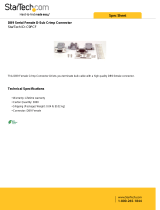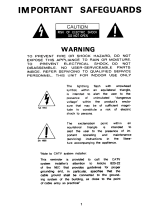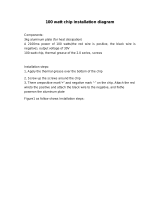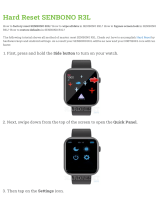
D('U-3 Digital
Antenna Rolalor Conlroller
Troubleshooting
CAUTION:
his unit has been thoroughly
tested
and
f
ed before shipment. Follow
the
onnector
wiring
carefully
between the
and the
DCU-3
control box. Pin #1
ust attach to Pin
#1,
etc...
lncorrect
wiring will burn
out the
rotator
poten-
tiometer and
void the
warranty.
The DCU-3
control
unit is designed
to
be
used ONLY
with
Hy-Gain HAM-IV
(type)
and T2X
rotator systems.
Do
not try
to
use this control
on other systems.
Wiring
Most operational difficulties
with
rotators
are
traceable to broken,
shorted,
grounded
or
miswired control cables. Time
spent on
assembling,
routing
and
protecting
the
control cable
will
lead to a long
trouble-free
rotator life.
Unintentional
grounds
on cable leads can
burn
out the line fuse in the
DCU-3 control
box or burn out the
potentiometer
in the
rotator. If
pin
#3 is
grounded,
the heading
will
be
wrong
and
possibly
not rotate in the
proper
direction.
Note
also that
any
grounds
may
put
an
overload on the
power
transformer
which
could cause the
line fuse
to blow.
Antenna Motion
A
slight
amount
of
"play"
is
built into the
rotator
to avoid
binding due to en-
vironmental
changes.
If the antenna actually rotates
in high
winds,
this is usually
just
the mast
slipping
in
the
rotator or the antenna slipping
on the
mast.
For
large
antennas, it is often necessary to
drill
a 5116" hole through
the rotator
clamping
plate
and mast
and
pin
them
together
with the
bolt
provided.
Also,
if
possible, pin
the antenna
to
the mast
with
appropriate
hardware. If
slipping is
suspected, refurn the rotator
to an
end
of
rotation
limit and
visually
check
antenna
alignment.
Lack
of
Power
If the antenna
rotation
is slow or sluggish
or
hard to start,
check
for
proper
voltages
on
pins
#2,5, and
6.
(See
Table
4) If
the
voltages are
correct,
the 130
-
156
MFD
capacitor
may be old.
If
your
unit
is more
than 5
years
old, try
replacing this
capacitor.
Also, if
your
cable
run is over
20A
feet,
make sure
that
you
are
using the
proper wire
size. See
Table
2. For cable
runs over
300
feet,
you
may
wish to move the
motor
capacitor
to the
tower. This allows
you
to
run only 6
wires from
the control
to the
rotator, so
that
you
can
reduce
wire
resistance by doubling
up
wires
or
using
fewer, heavier
wires.
If the electrical
circuit
is
working, then
check for
mechanical
problems.
Look
for
mast binding or
thrust bearing
misalignment
if
you
have experienced strong
winds
recently.
If the temperature
is less than
-30
deg. F
(
-34
d"g.
C
),
the rotator
will
be
very
sluggish or
may not run
at all!
This
is
normal. Do
not try to
rotate
with the DCU-3
control
if temperatures are below
-30
deg.
F!
Older
models of
HAM-M,
I l, I I
l, IV
and
TZX
rotators
may be
very sluggish
at
temperatures
less than 0 degrees
F.
14
Version
1























